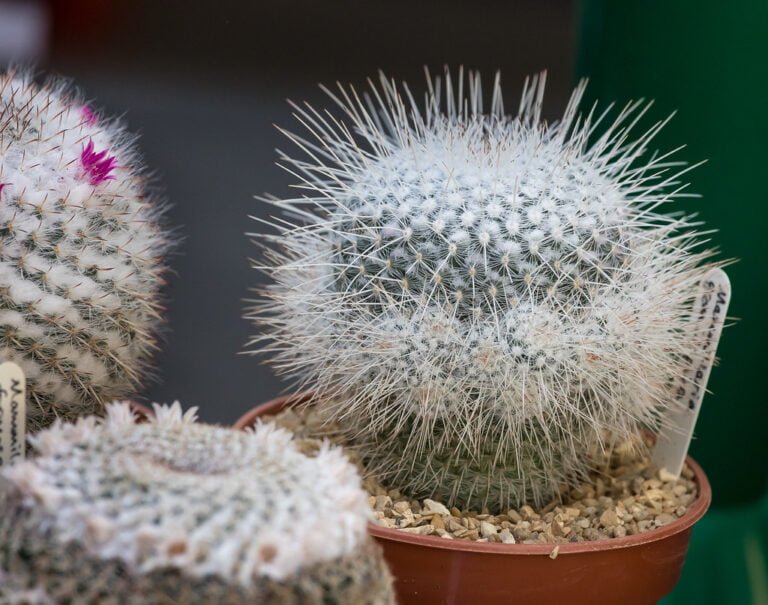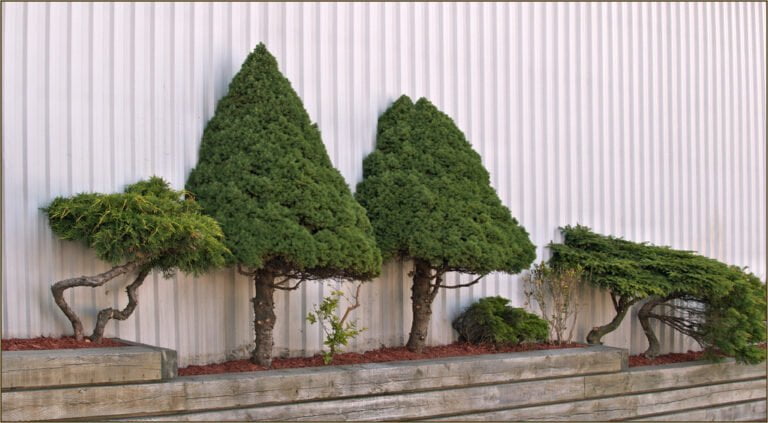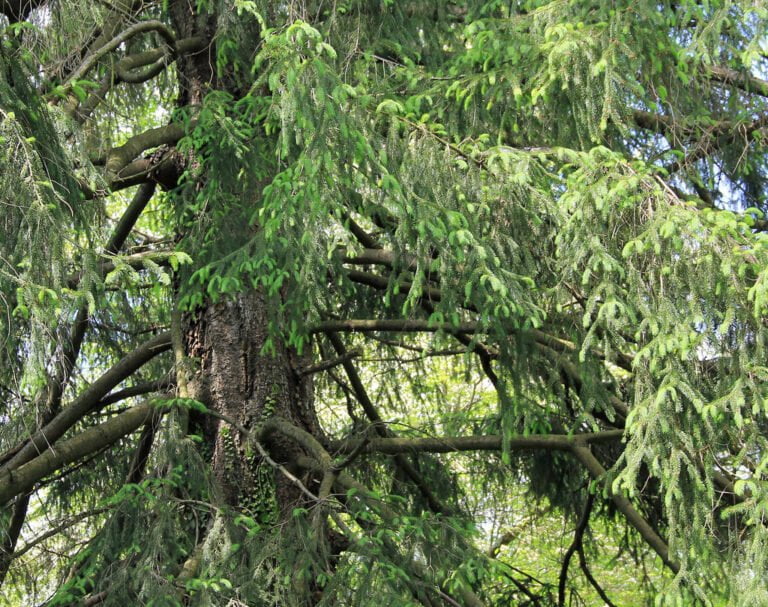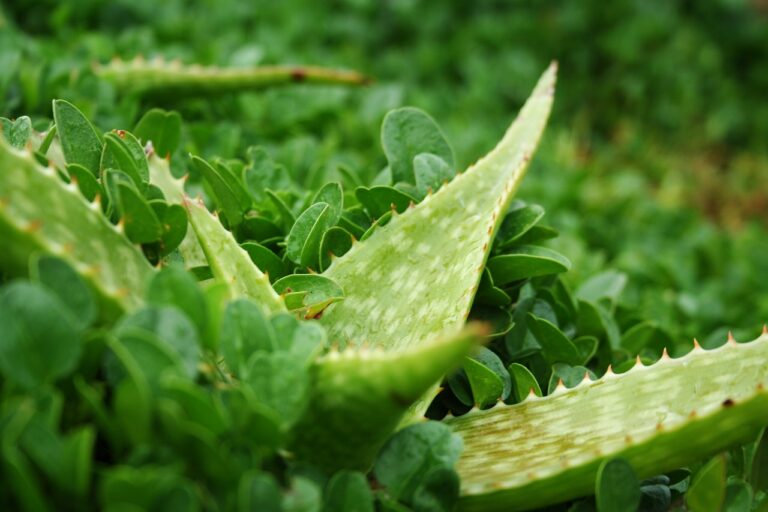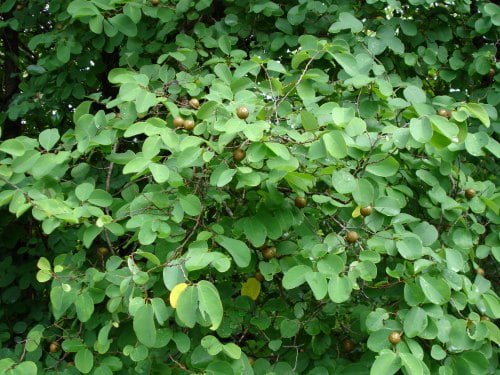Bamboo and Grass-Like Plants
Hey there! Picture yourself strolling through a gorgeous garden, completely surrounded by a sea of vibrant greenery. It’s like stepping into a serene oasis. And what catches your eye? The elegant presence of bamboo and those grass-like plants that make you stop and take a moment to appreciate their natural beauty.
These incredible plants have slender stalks and leaves that flow gracefully, adding a touch of sophistication to any landscape. Today, we’re going to delve into what makes these plants so special. We’ll explore their unique characteristics, life cycle, cultivation techniques, and even practical ways you can use them in your own garden.
So, let’s get started on this green adventure together, shall we?
Key Characteristics
One of the key characteristics of bamboo and grass-like plants is their remarkable ability to thrive in diverse environmental conditions. These plants have adapted to various soil types and are known for their resilience to extreme weather. Understanding their growth patterns and the environmental benefits they provide can help us better serve others.
Bamboo, for instance, exhibits unique growth patterns that contribute to its success in different environments. It’s a fast-growing plant, capable of reaching maturity in just a few years. This rapid growth allows bamboo to quickly establish itself and provide numerous benefits to its surroundings. Additionally, bamboo has a rhizome system that helps it spread and form dense stands, which contribute to erosion control and the preservation of soil quality. These growth patterns make bamboo an excellent choice for reforestation efforts, as it can quickly restore degraded lands and improve overall ecosystem health.
Grass-like plants, on the other hand, have their own set of characteristics that make them valuable in serving others and the environment. These plants are typically low-growing and have fibrous root systems that help stabilize soil and prevent erosion. Grass-like plants also play a crucial role in carbon sequestration, helping to mitigate climate change by absorbing and storing carbon dioxide from the atmosphere. Furthermore, their ability to tolerate a wide range of soil conditions makes them ideal for use in landscaping projects, particularly in areas with poor soil quality.
Life Cycle
As you continue to explore the remarkable characteristics of bamboo and grass-like plants, it’s important to understand their life cycle, which occurs with varying frequencies depending on the species. These plants go through different growth stages and have a unique reproductive process.
The life cycle of bamboo and grass-like plants begins with germination. During this stage, the seed absorbs water and nutrients from the soil, allowing it to sprout and develop into a seedling. The seedling grows rapidly, producing more leaves and stems as it enters the next stage, known as the vegetative phase.
During the vegetative phase, the plant focuses on establishing a strong root system and increasing its overall size. This is when you’ll see the characteristic tall and slender stems of bamboo and the dense, grass-like leaves of grass plants. The vegetative phase can last for several months or even years, depending on the species.
Once the plant has reached a certain level of maturity, it enters the reproductive phase. This is when the plant produces flowers and seeds, allowing it to reproduce. In bamboo plants, this phase occurs only once in their lifetime, as they produce flowers and seeds only once every several decades. Grass-like plants, on the other hand, may go through the reproductive phase more frequently, sometimes even annually.
During the reproductive process, the flowers of these plants are pollinated by wind, insects, or other means. The fertilized flowers then develop into seeds, which are dispersed by various methods such as wind, water, or animals. The seeds eventually find their way into the soil, where the cycle begins again.
Understanding the life cycle of bamboo and grass-like plants is crucial for proper cultivation and management. By knowing the growth stages and reproductive process, you can ensure their successful propagation and contribute to the beauty and sustainability of these remarkable plants.
Habitat and Growing Conditions
To successfully cultivate bamboo and grass-like plants, you need to understand the ideal habitat and growing conditions. These plants have unique habitat adaptations that allow them to thrive in various environmental factors. Understanding these factors will help you create the perfect conditions for their growth.
Bamboo plants are commonly found in tropical and subtropical regions. They prefer rich, well-drained soil with a slightly acidic pH level. Adequate water supply is crucial for their growth, and they thrive in areas with high rainfall. However, they can also tolerate drought conditions once established. Bamboo plants require full sun exposure to maximize their growth potential.
Grass-like plants, such as sedges and rushes, have different habitat preferences. Many of these plants thrive in wetland areas or near bodies of water. They’re adapted to grow in marshy or boggy soil that retains moisture. These plants can tolerate a wide range of soil pH levels, from acidic to alkaline. They also prefer areas with full sun exposure, although some varieties can tolerate partial shade.
Environmental factors play a significant role in the growth of bamboo and grass-like plants. Temperature is an important factor, as these plants have specific temperature requirements. Most bamboo species can tolerate a wide range of temperatures, but extreme cold or heat can negatively impact their growth. Grass-like plants, on the other hand, have varying temperature preferences depending on the species.
Popular Varieties
Now let’s delve into the world of popular varieties of bamboo and grass-like plants, continuing our exploration of their habitat and growing conditions. When it comes to bamboo, there are several popular varieties that you can choose from, each with its own unique characteristics and requirements. Take a look at the table below to get a better understanding of these varieties and their propagation methods and maintenance tips:
| Variety | Propagation Methods | Maintenance Tips |
|---|---|---|
| Bambusa | Division | Regular watering |
| Phyllostachys | Rhizome cuttings | Pruning |
| Fargesia | Clump division | Mulching |
| Pleioblastus | Rhizome cuttings | Fertilizing |
| Sasa | Rhizome cuttings | Shade tolerance |
Bambusa is a popular bamboo variety that can be propagated through division. To maintain healthy growth, make sure to provide regular watering. Phyllostachys, on the other hand, can be propagated by using rhizome cuttings. Pruning will help to control its growth and shape. If you opt for Fargesia, clump division is the way to go. Mulching will help to retain moisture and suppress weeds. Pleioblastus can be propagated through rhizome cuttings and benefits from regular fertilizing. Lastly, Sasa is a shade-tolerant bamboo variety that can be propagated through rhizome cuttings.
When it comes to grass-like plants, there are also popular varieties to consider. One such variety is Liriope, which can be propagated through division. Regular watering and occasional fertilizing are essential for its maintenance. Another popular choice is Ophiopogon, which can be propagated through division or seeds. It requires well-draining soil and regular watering. Carex is another grass-like plant that can be propagated through division or seed. It prefers moist soil and benefits from occasional fertilizing. By understanding the propagation methods and maintenance tips for these popular varieties, you can ensure the health and beauty of your bamboo and grass-like plants.
Cultivation and Care
Continue your exploration of bamboo and grass-like plants by learning about their cultivation and care. To successfully cultivate and care for these plants, it’s essential to understand propagation methods and pruning techniques. Here are some important tips to help you serve your plants and ensure their healthy growth:
Propagation methods:
- Division: Bamboo and grass-like plants can be propagated through division. Carefully dig up the plant and separate it into smaller sections, ensuring that each section has roots and shoots. Replant the divisions in well-draining soil and water thoroughly.
- Rhizome cuttings: Some bamboo species can be propagated through rhizome cuttings. Take a healthy rhizome and cut it into several sections, making sure each section has at least one bud. Plant the cuttings horizontally in a well-prepared soil mixture and keep it moist until new shoots emerge.
- Seeds: Grass-like plants can be propagated by collecting and sowing their seeds. Harvest the seeds when they’re fully mature and sow them in pots or directly in the ground. Keep the soil consistently moist until germination occurs.
Pruning techniques:
- Remove dead or diseased foliage: Regularly inspect your bamboo and grass-like plants and remove any dead or diseased foliage. This will prevent the spread of diseases and maintain the overall health of the plants.
- Thin out overcrowded growth: Over time, bamboo and grass-like plants can become congested with too many stems or shoots. To prevent overcrowding and promote better air circulation, selectively remove some of the excess growth.
- Control height and spread: Prune the taller culms or stems of bamboo to control their height. Similarly, trim back the spreading rhizomes of grass-like plants to prevent them from invading other areas of your garden.
Landscaping and Design
As you plan your landscaping and design, consider incorporating the beauty and versatility of bamboo and grass-like plants that you have learned to cultivate and care for. These plants can add a unique touch to your landscape architecture and garden design, creating a serene and inviting outdoor space.
When it comes to landscape architecture, bamboo and grass-like plants offer countless possibilities. Their slender and graceful appearance can be used to create vertical accents or provide a natural privacy screen. With their vibrant green hues and delicate foliage, they can also serve as focal points within your garden design, adding depth and texture to the overall layout.
To fully utilize the potential of bamboo and grass-like plants, it’s important to consider their growth habits and requirements. Some varieties of bamboo, for example, can spread rapidly and may require containment to prevent them from taking over your garden. By incorporating barriers or planting them in containers, you can control their growth and maintain a well-balanced landscape.
When designing your garden, pay attention to the different heights and textures that bamboo and grass-like plants can offer. Consider using taller varieties as background plants, while shorter ones can be used as borders or ground covers. By mixing different species, you can create a visually appealing composition that adds interest and diversity to your landscape.
Common Issues and Solutions
To address common issues with bamboo and grass-like plants, you can implement simple solutions that will help maintain the health and appearance of your garden. Whether it’s dealing with pests or finding effective propagation methods, taking proactive measures is key to ensuring the longevity of your plants.
For pest control, there are several options you can consider.
- Natural Predators: Introducing beneficial insects like ladybugs or lacewings can help control common pests such as aphids or mites. These natural predators feed on the pests, keeping their population in check.
- Organic Sprays: If the pest problem persists, you can opt for organic sprays made from neem oil or insecticidal soaps. These products are safe for plants and humans and can effectively control pests without harming the environment.
- Physical Barriers: Erecting physical barriers, such as mesh netting or fences, can prevent larger pests like rabbits or deer from damaging your plants. This is especially important if you live in an area with a high population of wildlife.
When it comes to propagation methods, there are a few techniques you can try.
- Division: Dividing clumping bamboo or grass-like plants is a popular method for propagation. Simply dig up the mature plant and carefully separate the sections, making sure each division has enough roots and shoots to thrive.
- Rhizome Cuttings: For running bamboo, taking rhizome cuttings can be an effective way to propagate new plants. Cut a healthy rhizome section and plant it in a well-draining soil mix. Keep the soil consistently moist until new shoots emerge.
- Seeds: Some grass-like plants produce seeds that can be collected and sown. However, keep in mind that germination rates can vary, and it may take longer for the plants to reach maturity compared to other propagation methods.
Practical Uses
If you have successfully addressed common issues and ensured the health of your bamboo and grass-like plants, you may be interested in exploring their practical uses.
Aside from their aesthetic appeal, these plants offer various environmental benefits and can also be utilized in art and crafts.
One of the key environmental benefits of bamboo and grass-like plants is their ability to absorb carbon dioxide and release oxygen into the atmosphere. They’re known to be highly efficient in this process, making them valuable in combating climate change. Additionally, these plants have extensive root systems that help prevent soil erosion, making them ideal for landscaping projects in areas prone to erosion.
In terms of art and crafts, bamboo and grass-like plants offer a versatile range of possibilities. Bamboo, for instance, can be used to create furniture, utensils, and even musical instruments. Its strength and flexibility make it a popular choice for constructing sturdy yet lightweight structures. Grass-like plants, on the other hand, can be dried and woven into mats, baskets, or decorative items. Their unique textures and colors add a natural and rustic touch to any artistic creation.
Furthermore, these plants can be utilized in floral arrangements and landscaping designs. Their graceful foliage and elegant shapes make them excellent additions to gardens, parks, and indoor spaces. They can be used to create natural borders, privacy screens, or as focal points in landscape designs.
Frequently Asked Questions
Can Bamboo and Grass-Like Plants Be Grown Indoors?
Yes, you can grow bamboo indoors, and it offers several benefits. Indoor bamboo can add a touch of nature and serenity to your living space. It helps purify the air by absorbing pollutants and releasing oxygen. Bamboo also requires minimal care and can thrive in low light conditions.
On the other hand, grass-like plants are excellent for indoor decor due to their lush, green foliage. They can bring a refreshing and natural ambiance to any room.
How Do I Prevent Bamboo From Spreading and Becoming Invasive?
To prevent bamboo from spreading and becoming invasive, there are several methods you can employ.
First, regular pruning and root barrier installation can help control its growth.
Secondly, you can apply herbicides specifically designed for bamboo control.
Additionally, regular monitoring and immediate removal of any new shoots can prevent further spread.
Lastly, educating yourself and others about the potential dangers of invasive bamboo can help raise awareness and promote responsible gardening practices.
Are Bamboo and Grass-Like Plants Safe for Pets?
When considering the safety of bamboo and grass-like plants for your pets, it’s important to be aware of the potential health risks. Some plants may be toxic to animals if ingested, causing digestive issues or even poisoning.
However, with proper precautions, you can safely incorporate these plants into your home. Make sure to research the specific plants you have and consult with a veterinarian if you have any concerns.
Keep them out of reach and provide alternative safe plants for your pets to interact with.
Can Bamboo and Grass-Like Plants Be Used as a Natural Privacy Screen?
Looking to create a natural privacy screen? Bamboo and grass-like plants can be great options! They offer numerous benefits, such as adding beauty and tranquility to your space, providing shade, and reducing noise pollution.
When it comes to bamboo, the best types for privacy screens include clumping varieties like Bambusa multiplex, which form dense clusters. These plants can grow quickly and create an effective barrier, giving you the privacy you desire while adding a touch of nature to your surroundings.
What Are Some Alternative Uses for Bamboo and Grass-Like Plants Besides Landscaping and Design?
When considering alternative uses for bamboo and grass-like plants, it’s important to think beyond just landscaping and design. These versatile plants can also serve as sustainable building materials and renewable energy sources.
Bamboo, for example, is known for its strength and durability, making it an excellent choice for construction purposes.
Additionally, both bamboo and certain types of grasses can be used to generate bioenergy, providing a renewable and environmentally-friendly source of power.
Conclusion
In conclusion, bamboo and grass-like plants are versatile and resilient species that can enhance any landscape. With their unique characteristics and ability to adapt to various growing conditions, they offer a wide range of practical uses.
For example, bamboo can be used to create sustainable furniture and construction materials, while certain grass-like plants can serve as natural erosion control in gardens and slopes.
By understanding their life cycles and providing proper care, these plants can thrive and contribute to a greener environment.


